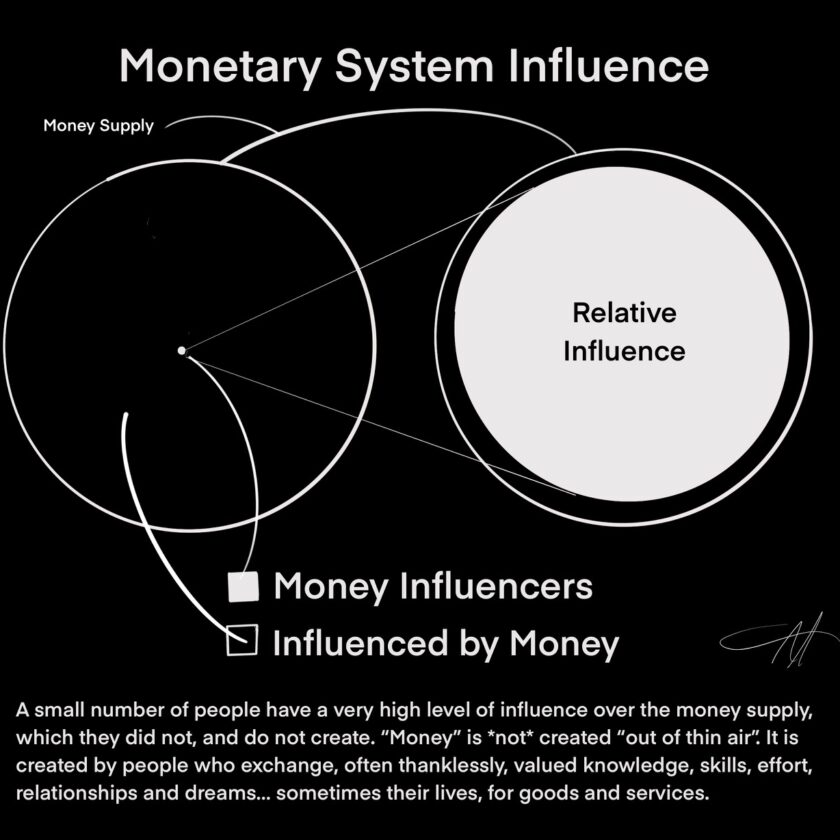In addition to being a writer, I’m a publisher that currently is in the process of releasing a new book titled, Transdermal Magnesium Therapy, which was written by Mark Sircus, Ac., OMD. Mark is a licensed acupuncturist, and doctor of Oriental Medicine. More importantly, he is a passionate advocate for human health, wellness, as well as awareness on navigating the complicated maze in which we are sometimes thrust due to the politics surrounding health.
Upon reading the manuscript early this year I started to appreciate just how pervasive magnesium is in the maintenance of human health. I also learned some of the many consequences of magnesium deficiency… not only in my own health history, but with what’s happening in lives every day, in America, and around the world.
For instance, here are some statistics on heart disease, from Mama’s Health:
- Every 34 seconds a person in the United States dies from heart disease.
- More than 2,500 Americans die from heart disease each day.
- Every 20 seconds, a person in the United States has a heart attack.
- At least 250,000 people die of heart attacks each year before they reach a hospital.
- Studies show that under-educated people are more likely to suffer heart attacks.
- The countries with the highest death rates from heart disease are the Soviet Union, Romania, Poland, Bulgaria, Hungary, and Czechoslovakia. The countries with the lowest are Japan, France, Spain, Switzerland, and Canada.
- Almost 6 million hospitalizations each year (in the United States) are due to cardiovascular disease.
- Since 1900, Cardio Vascular Disease has been the number 1 killer in the United States for every year but 1918.
- Every 33 seconds, a person dies from Cardio Vascular Disease in the United States.
- Men suffer heart attacks about 10 years earlier in life than women do.
As you can see, heart disease is no laughing matter. Millions ($$$) are being raised to understand the causes of, and find ways to prevent heart disease, yet the numbers keep rising. With all the collective attention that has been focused on the disease, precious few preventative measures have emerged. This may be due, in part, to the fact that we’re now so convinced that smoking is a leading cause and accelerator of heart disease, we’ve stopped looking for other possibilities, and have instead gone on a campaign to coerce, cajole, harrass or shame people to stop smoking.
We’ve even gone so far as to declare that second-hand smoke is as “bad” at causing heart problems, cancer, and lung disease as smoking itself.
Smoking is a far more palatable and sexy “nemesis” than magnesium deficiency. We’d rather spend time and energy blaming smoking, being irritated by the (perceived) insensitivity of smokers, and the harm that they are causing us, than take actionable steps to get a missing critical nutrient into our own body and see what happens. One approach achieves no change, maintaining the status quo, while the other can achieve changes that are no less than profound.
We’ve grown comfortable being able to judge someone for doing something that’s making themselves, and us sick, when in fact, we are maintaining our own susceptibility to sickness by, either unknowingly or unwittingly, keeping our magnesium stores too low. Yet, it has become what’s “normal” for us, and maintaining familiar ways is deemed far easier than to look at ourselves with the will to change positively. We cling to our option to look condescendingly at someone smoking even while tens of thousands of hearts are still failing; fallen silent in people who have never picked up a cigarette.
A news article in a 2006 issue of British Dental Journal offers more support that smoking isn’t actually required in order to have heart disease:
Tooth loss and heart disease linked, even among non-smokers
There is a strong, progressive association between tooth loss and heart disease according to a report in the latest issue of American Journal of Preventive Medicine. The researchers found that heart disease was present in 4.7% of those without tooth loss, 5.7% of those with one to five missing teeth, 7.5% of those with six to 31 missing teeth, and 8.5% of those with total tooth loss. This finding emerged after adjusting for sex, race and ethnicity, education, marital status, diabetes, smoking status, alcohol consumption, high blood pressure, high blood cholesterol and body mass index. The researchers, based at the Division of Adult and Community Health at the Centers for Disease Control and Prevention in America, analysed data from 41,891 respondents aged 40 to 79. The investigators noted that the results of this study are consistent with previous studies that link periodontal disease and tooth loss to an increased risk of atherosclerosis and heart attack. However, they said that other studies had not shown an association between oral conditions and heart disease. Catherine Okoro, the lead investigator, emphasised that the correlation between tooth loss and heart disease held even when smoking status was considered. ‘Smoking has strong relationships to both tooth loss and heart disease. Nonetheless, when we stratified by age group and smoking status, a significant association remained between tooth loss and heart disease among respondents aged 40 to 59 years who had never smoked.’ Okoro said the relationship between tooth loss and heart disease is of considerable public health interest because of the prevalence of both conditions in the general population. ‘These results highlight the importance of health promotion counselling that includes the promotion of heart-healthy behaviours, the prevention and control of cardiovascular disease risk factors and the maintenance of good oral health,’ she said.
I’ve limited this examination to heart disease, just one of the scourges that plagues the health of millions, and millions more who love, depend on, work and play with, or otherwise care about them. But here’s a bulletin: all of the conditions noted here that people are so convinced are due to smoking, are also signs and consequences of magnesium deficiency.
In fact, if a heart attack victim survives long enough to get to the hospital, the treatment that offers patients the best chances of recovery, is an injection of magnesium into the heart. Since magnesium is a mineral, and not a drug, it means that the patient was experiencing a severe case of magnesium deficiency.
Calcification, osteoporosis, plaque build-up, irregular heartbeat, tremors and ticks, are all natural consequences of magnesium deficiency. All of these conditions will tend to go naturally away when magnesiums stores are replenished. It’s not a matter of being healed; more so of simply returning to normal. Our current obsession with prescription drugs involves efforts to find a pharmaceutical that can “heal” (so a market can be cornered on it), when the real deal, which is abundant, inexpensive, available, and compatible with cell physiology, and has no downside effects, goes unheralded.
Now, take what I’ve said about heart disease and look around. See the legions of people who are trying their best to “manage” living with diabetes, stroke, hypertension, many varieties of cancer, Alzheimer’s disease, autism, and others.
Dr. Sircus made it clear, supported with numerous citations, that if we look deeply enough, we’ll find magnesium — more so, deficient stores — as a contributory, if not causal factor. Yet, while today’s traditional “medicine men” in the white smocks will screen for patient’s magnesium level, there are presently no protocols in place to bring deficient levels up to normal, eliminating a magnesium deficiency contribution. The condition is simply reported, and the patient’s symptoms “treated” with drugs. No cure is possible when steps are not taken to have the patient “refill” the body’s stores of this vital element.
This is what I’ve been learning for the past 10 months or so. The importance of magnesium content to human physiology. Our profoundly deficient magnesium status and the consequences thereof, and the fact that standard medical practices are not proactive upon this diagnosis. But then, I understand. They are not proactive about diagnosing that magnesium levels are down, with its long list of potential consequences, because the drugs they would normally prescribe, would not be needed.
That was my assessment of what I read. Mark and his research assistant, Claudia French, who is an R.N., were careful to provide numerous footnote references, so that the reader could go deeper, and not have to take their words. Test after test, study after study, medical trial after medical trial, all led the reader to the same conclusion: magnesium is critical to the maintenance, restoration, or sustainability of human health, and we’re likely deficient in it. And if we are, we’d better do something about it on our own.
Fortunately, a growing number of people have been raising magnesium up on the radar screen of human health. One was Mildred Seelig, MD, FACN (1920-2005), executive director of the American College of Nutrition, became the prime mover in the magnesium field when she published the now classic paper on “the requirement of magnesium by the normal adult” in 1964 (Am J Clin Nutr 14:342-390). For more than four decades she was involved in studying, advancing, and teaching about magnesium all over the world. At the time of her passing, she was Adjunct Professor of Nutrition at the University of North Carolina at Chappel Hill. Dr. Seelig, along with many other doctors and researchers are cited.
The thrust of Transdermal Magnesium Therapy is the recent availability of magnesium chloride. When sodium binds with chloride to form salt (NaCl), it takes a crystalline form. Magnesium binds with chloride during the evaporation of sea water to produce salt. However, as the water (hydrogen and oxygen) are being removed, magnesium chloride is a liquid byproduct. This all-natural process creates a liquid solution that can allow the magnesium to enter the body through the skin either by rubbing or spraying it topically, directly on the skin, pouring an amount in a bath and hopping in, or pouring some in a footbath and sticking the feet in. Magnesium ions release from the chloride and enter the body through the skin, where they are directed to all parts as needed.
Magnesium chloride is available in several forms from available from a number of sources, including a Ocean Magnesium Products. There is far more to say on the subject, which Mark does an admirable job at. He was not the first person to turn this subject into a passion; interest in the subject is growing each day, as more people understand the many ways it is integral to body and cell physiology; which makes the lethargy of our current health care system all the more perplexing, if not downright troubling.
If you want to learn more, I invite you to listen to an interview I conducted with Mark a short while ago by clicking here. The run time is 1 hour 3 minutes. You’ll get a greater feel for the enormity and importance of this subject.
‘Nuf said… for now.




